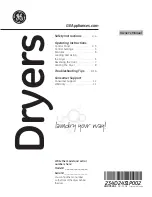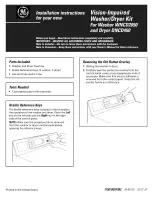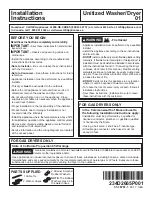
41
Troubleshooting
en-us
Rust spots on the silverware.
Silverware not adequately rust-
resistant. Knife blades are frequently
more severely affected.
Use corrosion-resistant silverware.
Silverware will also rust if rusting
parts are rinsed at the same time (pan
handles, damaged utensil baskets,
etc.).
Do not wash rusting parts.
Salt content in the rinsing water too
high, as salt dispenser lock not
fastened firmly or salt was spilled
while being refilled.
Fasten salt dispenser lock firmly or remove
spilled salt.
Appliance cannot be switched
on or operated.
Malfunction.
Disconnect appliance from the power
supply; pull out the mains plug or switch off
the fuse. Wait at least 5 seconds, then
connect the appliance to the power supply.
Appliance does not start.
Mains fuse may have been blown or
circuit breaker tripped.
Check mains fuse or circuit breaker.
Door may not be properly latched.
Press the main power switch to turn unit on.
Unit may not be turned on.
Shut door completely.
Delay start may be engaged.
To reset, refer to “Delay start” section in this
manual.
Child lock is activated.
Deactivate the child lock. Refer to “Child
Lock” section in this manual if applicable.
The door may have been closed
without first selecting a cycle.
Select a cycle and close the door.
Power cord not inserted.
Ensure that the power cord is plugged all
the way into the back of the appliance and
into the socket. Check that the socket
functions.
The water supply may not be
connected.
Check and turn on water supply.
The appliance door has not been shut
properly.
Close the door.
The door has been open for more
than 4 seconds after pressing the
START button.
Press the START button again and close the
appliance door within 4 seconds (see
“Protection against unintentional
operation”).
Wash cycle starts automatically.
You did not wait until wash cycle
ended.
Perform reset.
(see “Canceling the wash cycle“).
Fault
Cause
Remedial action









































